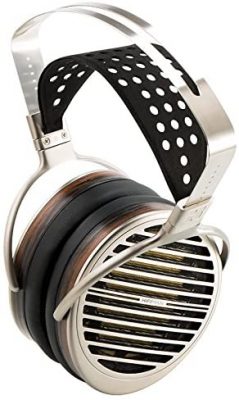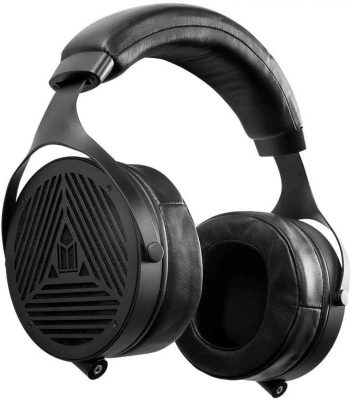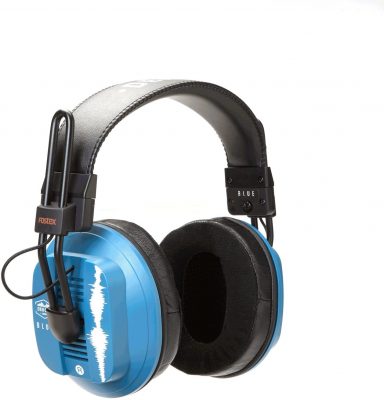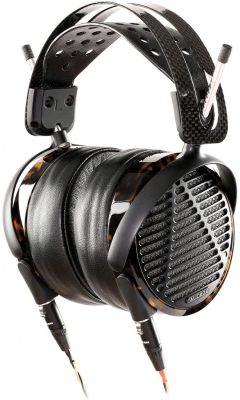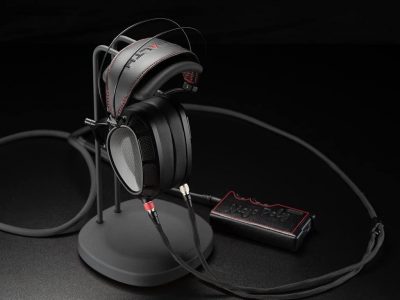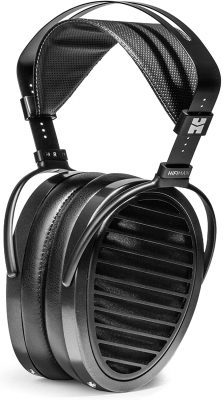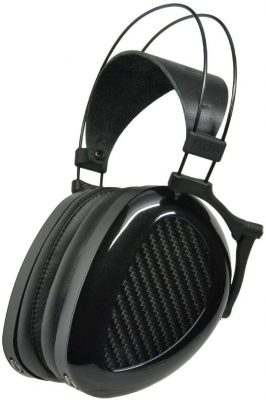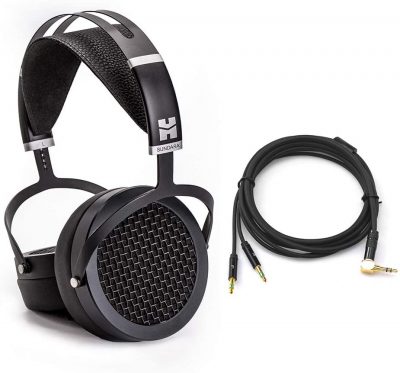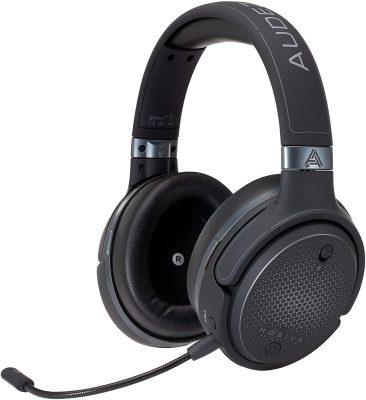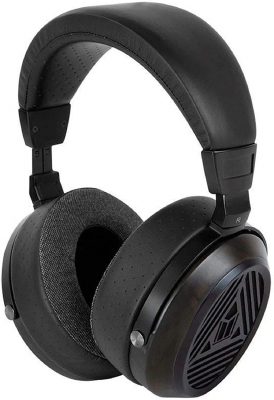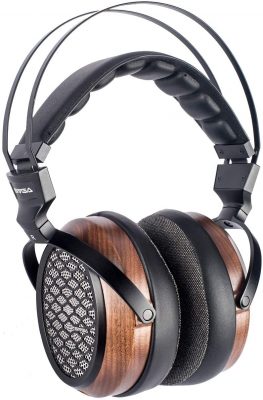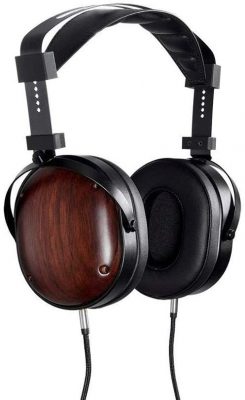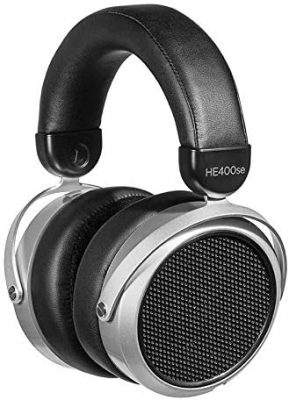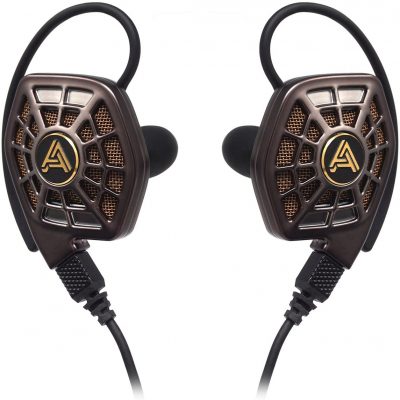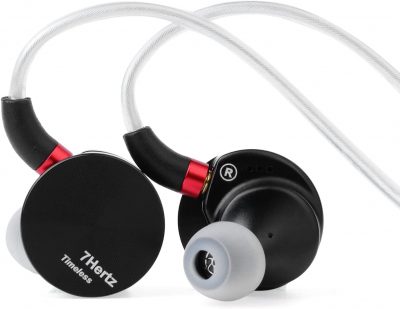Planar Magnetic headphones were the kings of high-fidelity (Hi-Fi) music since at least the 1970s. These marvelous devices gave out the best clarity and detail for your music without sounding like it came from a bass drum. Not only that, but their output also has more natural highs and lows while having the lowest possible audio distortion. Because of their precision, they are often used as studio headphones for mixing music and audio.
That said, expertly tuned, finely crafted, and scientifically precise instruments come at significant price tags. Due to that, most headphones and earphones available today use different transducer technologies like dynamic and electrostatic to convert electric signals into audible sound. As technology progressed, however, companies have again turned to make Planar Magnetic headphones for their quality. Now more durable, smaller, and less expensive, these HiFi devices are making a comeback and are probably here to stay! In this article, we are looking at the best Planar Magnetic headphones on the market today.
Inside This Article
- The 17 Of The Best Planar Magnetic Headphones in 2022
- Hifiman Susvara – Premium Pick
- Monolith M1070 – Best Choice
- Dekoni Audio Blue (Foster T50RP MK3 Mod) – Best Value
- Audeze LCD-5
- Dan Clark Audio Stealth
- Hifiman Arya – Stealth Magnet
- Audeze LCD-X
- Hifiman Ananda – BT
- Dan Clark Audio Aeon 2 Noire
- Hifiman Sundara
- Audeze Mobius
- Monolith M570
- SIVGA P-II
- Monolith M565C
- Hifiman HE400SE – Stealth Magnet Version
- Special Mentions
- How Do Planar Magnetic Headphones Work?
- Why Choose Planar Magnetic Headphones Compared to Dynamic Ones?
- How to Choose the Best Planar Magnetic Headphones for You
Best Planar Magnetic Headphones
For this list, we’ve highlighted the most important specs that one would look for in planar magnetic headphones. We added each device’s backing, form factor, connectivity, and whether it has a microphone or not to help you choose which one is the best for you. Aside from that, we also added a short introduction to the headphone with some important points about them.
Related: Best Open Backed Headphones
Backing: Open
Form Factor: Over-Ear
Connectivity: Wired – 6.35mm, 3.5mm, and XLR
Microphone: No
Hifiman’s Susvara is a planar magnetic headphone for mixing, recording, or anything else a professional audio technician would need. Their flagship headphones, the Susvara, are the epitome of “premium.” Not only does it has specially shaped “stealth magnets” for its nanometer-grade membrane, but it also has a conductive coating made from gold. Aside from the excellent distortion protection that it provides, this combination also gives one of the most reactive audio drivers in the world.
Backing: Open
Form Factor: Over-Ear
Connectivity: Wired, 2.5mm
Microphone: No
Monolith’s M1070 is an amazing feat of balancing the aspects of comfort, functionality, and price. While it is lightweight at just 20.5 ounces, its memory foam lambskin ear-cups give a lot of room for its 106mm planar drivers. Its open-backed nature also helps the driver create a wider soundstage while continuing to give out clear and accurate bass sounds. Because of its premium features and affordable price, the Monolith M1070 is confidently our best choice pick for a planar magnetic headphone.
Backing: Semi-open
Form Factor: Over-Ear
Connectivity: Wired, 3.5mm
Microphone: No
A surprisingly cheap pair of planar magnetic headphones, Dekoni Audio’s Blue is the result of their collaboration with Fostex. While they may look like your average workman’s ear muffs, these blue wonders are fully functional planar magnetic headphones. At its core, the Blue is a modification of Foster’s already popular T50RP MK3 and has the same specifications. What makes the Blue better than the standard T50RP, though, is its Dekoni Audio “Elite Velour” earpads, the company’s specialty. Aside from that, the Blue is a good beginner’s set to experience the difference that planar magnetic drivers can make.
Backing: Open
Form Factor: Over-Ear
Connectivity: Wired, 6.35mm, XLR
Microphone: No
The LCD-5 is the newest in Audeze’s LCD series of planar magnetic headphones that show off the company’s experience and prowess in the field. Coming in at just 420 grams (1/3rd lighter than the LCD-4), the LCD-5 still contains what made the LCD-4 an industry standard. Patented “parallel uniform” voice coils, Fluxor magnets, Fazor waveguided membranes, and an optimized acoustic chamber let the LCD-5 have one of the world’s best soundstages with pinpoint imaging and responses. If you have the wallet for it, the Audeze LCD-5 is the slightly cheaper alternative to Hifiman’s Susvara.
Backing: Closed
Form Factor: Over-Ear
Connectivity: Wired, 6.35mm
Microphone: No
Another contender to Hifiman’s Susvara is Dan Clark Audio’s (formerly MrSpeakers) Stealth line. Equipped with a large 72mm x 50mm planar magnetic driver, a nickel-titanium headband, and carbon fiber baffles, the Stealth is both hardy and aesthetically pleasing. Using Dan Clark Audio’s patented Acoustic Metamaterial Tuning System (AMTS), the Stealth combines waveguides, diffusion controls, and Helmholtz resonators into its small earcups. This allows Stealth to broadcast high-fidelity music smoothly and accurately across different genres.
Backing: Open
Form Factor: Over-Ear
Connectivity: Wired, 3.5mm, 6.35mm
Microphone: No
An improved version of Hifiman’s hit Arya, the “Stealth Magnet” features exactly that, acoustically invisible magnets. Visually and mechanically the same as the popular Arya, the Stealth Magnet version has one massive improvement. Hifiman sound engineers have managed to make the planar magnetic driver’s magnets acoustically transparent using specially shaped magnets. Aside from this improvement, the Stealth Magnet Arya is basically the same system with a nanometer-thick membrane, “windows” style backing, and crystalline copper audio cable.
Backing: Open
Form Factor: Over-Ear
Connectivity: Wired, 6.35mm
Microphone: No
The 2021 version of LCD-X is Audeze’s planar magnetic headphones for professionals. Its latest modification saw improvements to the leather ear cups, headband, and planar magnetic drivers. The drivers are now in line with others in the LCD series of headphones and use Audeze’s planar driver designs with Fazor waveguided ultra-thin Uniforce membranes. While it may cost a pretty penny, there must be a reason why professional audio engineers like Grammy winners Manny Marroquin and Frank Filipetti use the LCD-X for their work.
Backing: Open
Form Factor: Over-Ear
Connectivity: Wireless, Bluetooth
Microphone: Yes (Plug and Play)
The Hifiman Ananda-BT is one of the few wireless Bluetooth-enabled items on this list of the best planar magnetic headphones. The Ananda-BT combines Hifiman’s two audio specialties, HiFi headphones and high-quality digital to audio converters (DACs). The Ananda-BT is basically a Bluetooth-enabled version of the original Ananda using similar filter and analog circuits as the R2R2000 DAC. It also shares the same standards with other Hifiman headphones, like their patented NEO supernano diaphragms (NsD) and asymmetrical ear cups. The Ananda-BT supports HWA, LDAC, APTX-HD, and APTX lossless Bluetooth codecs. Its wireless nature and plug-and-play microphone make the Hifiman Ananda-BT a perfect pair of planar magnetic headphones for gaming.
Related: Best Gaming Headsets
Backing: Closed
Form Factor: Over-Ear
Connectivity: Wired, 3.5mm
Microphone: No
The latest evolution of Dan Clark Audio’s Aeon 2 series, the Aeon 2 Noire is the ninth on this list of planar magnetic headphones. A slight improvement to the original Aeon 2 after user feedback, the Noire is lighter, closed-backed, and tuned even closer to the Harman Curve (the ideal headphone sound signature). While the Aeon 2 Noire may not be as groundbreaking as the rest of its family, it is still a stable and reliable pair of headphones for those who need one.
Backing: Open
Form Factor: On-Ear
Connectivity: Wired, 3.5mm
Microphone: No
The 2020 update to Hifiman’s Sundara model brings it up to spec with others in Hifiman’s headphone range. Featuring an 80% thinner diaphragm, an improved head strap design, and street-friendly materials, the Sundara offers a pretty good deal for its price. While it may not reach the frequency responses of Hifiman’s higher tier offers, the Sundara is a respectable mid-tier option.
Backing: Closed
Form Factor: Over-Ear
Connectivity: Wireless, Bluetooth – Wired, USB
Microphone: Yes
Audeze brands Mobius as a premium gaming headset; although it is arguable, we believe that it does a great job for its price. Designed with PC gaming in mind, the Mobius is equipped not just with Bluetooth connectivity but also has a detachable microphone as well. It also has several “gaming-centric” features, like integrated WAVES Nx head-tracking technology for 3D emulation, compatibility with PS4 and Xbox, independent volume controls, built-in noise reduction and mute/unmute buttons. It is also Discord-certified and works with Zoom, Skype, and Microsoft Teams. Its main downside is how its Bluetooth is limited to just AAC and LDAC codecs, a far cry from the Hifiman Ananda-BT’s own codec availability.
Backing: Open
Form Factor: Over-Ear
Connectivity: Wired, 3.5mm
Microphone: No
A beginner to mid-tier entry from Monolith, the M570 is a good example of what you can get on a budget. Featuring a 97 mm x 76 mm planar magnetic driver with a decent frequency response (5Hz to 55 kHz), the M570 was actually a good contender against the Dekoni Audio Blue for its cost to performance ratio.
SIVGA P-II
Backing: Open
Form Factor: Over-Ear
Connectivity: Wired, 4.4mm (balanced)
Microphone: No
SIVGA’s P-II is elegant, ergonomic, and most of all, functional — a pair of headphones that have the right mix of premium quality and affordability. It has a 97mm x 67mm nanometer-grade membrane covered by a shell of polished black walnut wood. The included 4.4mm balanced audio jack lets the P-II give out some of the most stable yet, clear bass sounds you can have with planar magnetic headphones. Best of all, SIVGA offers a 12-month guarantee should anything happen to your device!
Backing: Closed
Form Factor: Over-Ear
Connectivity: Wired, 3.5mm
Microphone: No
The M565C is the last Monolith headphones on this list and is cheaper than Monolith’s succeeding model, the M570. While cheaper, it only has 5kHz less frequency response rates than the M570. Bottom line, though, if you can afford the difference, the open-backed M570 is much more responsive than the M656C.
Backing: Open
Form Factor: Over-Ear
Connectivity: Wired, 3.5mm
Microphone: No
Hifiman’s budget planar magnetic headphones, the HE400SE – stealth magnet version are upgraded to use the same technology as Hifiman’s more high-end headphones. Compared to high-end models like the Arya or even the Sundara, the HE400SE has a limited frequency response range of just 20Hz to 20kHz. Beginner and budget planar magnetic users would probably appreciate the HE400SE for its low cost but decent performance.
Special Mentions
Before we end this list, we have two special mentions we have to note. These two, the Audeze iSINE 20 and Timeless 7hZ are examples of rarely made planar magnetic earphones or earbuds.
Related: Nothing Ear 1 Review
Backing: Semi-open
Form Factor: In-Ear
Connectivity: Wired, 3.5mm
Microphone: Yes
While advertising itself as a pair of headphones, the Audeze iSINE 20 is closer to earbuds than headphones due to its in-ear design. Specs-wise, the iSINE 20 gives out a respectable frequency response range of 10Hz to 50kHz while still using Audeze’s patented planar magnetic technologies. That said, its price of more than $500 can be problematic for the performance it gives out.
Timeless 7hZ
Backing: Not Applicable
Form Factor: In-Ear
Connectivity: Wired, 3.5mm, 2.5mm, or 4.4mm
Microphone: No
A HiFi planar magnetic driver-equipped earphone, 7hZ (Seven Hertz’s) Timeless model gives the planar magnetic experience in a small form. While it may not amaze compared to more proper headphones, its 5Hz to 40kHz frequency response range combined with its price lets people on the go have a good pair of planar magnetic earbuds on hand.
How Do Planar Magnetic Headphones Work?
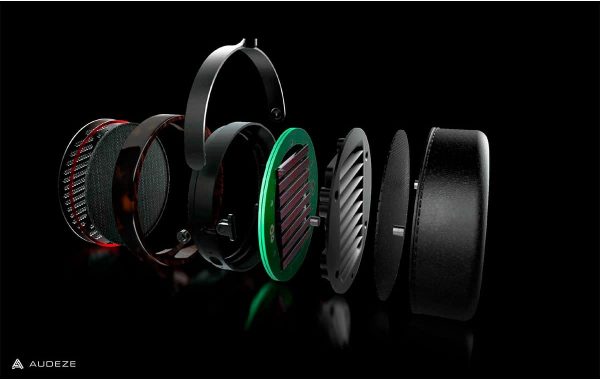
So, you are probably wondering how these Planar Magnetic headphones actually work. As we said earlier, “planar magnetic” (also called magneplaner, isodynamic, or orthodynamic) is a type of headphone driver or transducer that converts electrical signals into audible physical movement. Technologically, a planar magnetic driver is a bridge between common dynamic drivers (with one static magnet and a coiled membrane) and the more complicated electrostatic drivers (covering a membrane between two metal electrode plates).
A pair of planar magnetic drivers are basically a thin wired electrically conductive membrane (called the diaphragm) that is held in place between a set of magnets above and below it. When an electric audio signal is pulsed through the membrane’s wire, the membrane moves to or away from its magnets. This intense and fast movement forces air away and creates audible sounds before the membrane relaxes. The entire sequence is then repeated whenever an electric audio signal pulses through the membrane.
If you want to learn more about how digital audio works before it reaches the audio driver, we have an entire article on DACs or digital to audio converters and how they convert binary into electric audio signals.
Why Choose Planar Magnetic Headphones Compared to Dynamic Ones?

So, what makes planar magnetic headphones special and why should you pick them? Honestly, it depends on your preference and what you plan on using your headphones for. To people who want to have a pair of headphones for their day-to-day use, casual music listening, answering calls, or teleconferences, a pair of dynamic headphones will suffice. Not only are these cheaper than planar magnetic headphones, but there is also a wider selection of them.
The people who would want to have a pair of planar magnetic headphones, though, would want them for three specific things. Their first need would, of course, be the detail and clarity magneplaners provide compared to dynamics. Because of its larger and spread-out “membrane” instead of a central coil, mangeplaners offer a crisp, even, and precise sound. This also has the effect of putting out better and sharper bass and trebles. Another reason planar magnetic headphones are better for audiophiles is their protection against audio distortion. Due to how the membrane is magnetically suspended, it is less likely to be affected by magnetic or electric distortions compared to dynamic drivers. Finally, planar magnetic drivers are harder than traditional dynamic drivers. This hardiness is mainly due to a reduction of moving parts compared to dynamic drivers.
Now for the cons. The first, of course, is the price since planar magnetic headphones are going to be more expensive than comparative dynamic ones. Without delving too deep into the open-backed vs closed-backed headphone debate, magneplaners are also more suited as open-backed headphones due to their wider soundstage. Because of its precise construction, planar magnetic drivers are also unique, even when compared to others of the same model. This means that no two headphones are exactly the same audio-wise.
How to Choose the Best Planar Magnetic Headphones for You

After you looked at your wallet, listened to your current headphones, and decided you want a better one, how do you choose the best set of planar headphones for you? Well, here are a few reminders when you are looking at our list and deciding which one you want.
Price
The first thing you want to look at when looking for planar magnetic headphones is the price. As we keep saying, these devices can be a pretty hefty investment, with our Premium Pick, the Hifiman Susvara coming in at a whopping $6,000 brand new. Your headphone pick should always be a balance between affordability, quality, and features. You should also make sure to only buy your accessories from reputable and trustworthy sellers.
Branding and Construction Quality
The second thing to look at is the headphones’ branding and their construction quality. There are a few bigwigs in the planar magnetic headphone industry like Hifiman, Dan Clark Audio (formerly MrSpeakers), Audeze, and Monolith. Well-known and trusted brands usually have stringent quality control measures that ensure you get high-quality and hardy headphones. If you do pick a pair from a lesser-known brand, read its product reviews and make sure they have a nearby repair facility in case something goes wrong.
Form Factor and Backing
Another thing to look at is your planar magnetic headphones’ form factor and backing. Headphones come in several different form factors, over-ear, on-ear, and in-ear. Whichever one you pick depends entirely on your preference. Over-ear covers the entirety of cups behind your ears. On-ear sets, on the other hand, sit on top of your earlobes. Finally, in-ear headphones or earbuds usually enter your ear canal with the audio directly broadcasting into them.
Headphone backing, meanwhile, is split between open, semi, and closed. The backing refers to the shell of your headphones and whether they allow air and other sounds to come from outside the headphones when in use. Generally, open-backed headphones are used in quiet environments and studios, while closed-backed headphones are more common for daily use and those on-the-go.
Connectivity and Microphones
Another thing you should look out for is the planar magnetic headphones’ connectivity and whether it has a microphone or not. Due to how most planar magnetic headphones are specialist devices, wired units sometimes come with unusual audio jacks. Some use different jacks instead of the usual 3.5mm, like 2.5mm and 6.5mm jacks. There are also rare units that are fully wireless using Bluetooth technology like the Hifiman Ananda BT. Aside from how they are connected, you should also make sure whether the headphones you choose have an integrated microphone or not.
Comfortability and Sound Quality
The final two things to note when getting a pair of headphones are connected — their comfortability and sound quality. Not only should your chosen pair of planar magnetic headphones comfortably fit in or on your ears, but they should also sound right. While comfortability is pretty straightforward, you should also factor in how comfortable you are with how loud your headphones can get. When it comes to sound quality, the only real way to know whether the unit you got is good is to test it. While most brick-and-mortar stores do let you test a unit out before buying them, it is impossible to do the same for online purchases. If you do find defects with your item, most online shops do offer returns or refunds. You should check with the seller or selling platform before purchasing your headphones.
Regarding your headphones’ sound quality, wired units may sometimes need additional amplifiers to properly output your audio. This happens when the device your headphone is connected to does not have enough juice to power them. Aside from getting an amplifier for it, you might want to get a DAC with a built-in one instead to have a better audio experience.
Conclusion
Planar Magnetic headphones are at the forefront when it comes to high-fidelity audio because of their low distortion and, generally, good mid and low balance. However, they are not exactly cheap making them less accessible to the masses. It also has a very specific niche — the audiophiles. If you are someone in need of everyday headphones for regular uses like calling and streaming, then a pair of dynamic headphones is enough. However, if you’re into mixing, planar magnetic headphones can make all the good difference.

